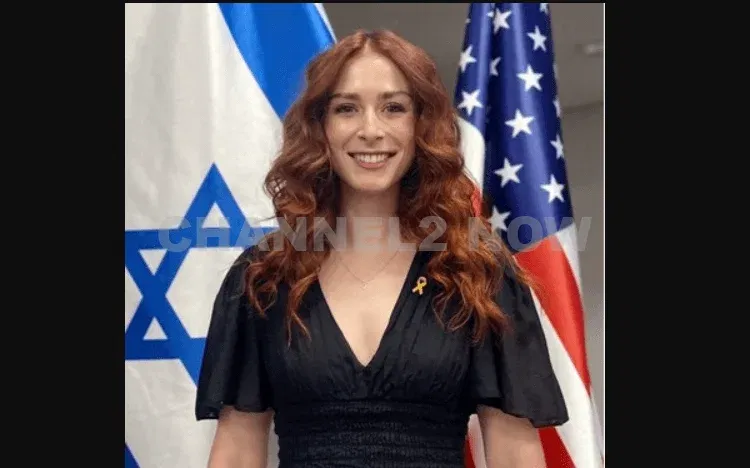On the evening of May 21, 2025, the heart of Washington, D.C. was pierced by tragedy. What should have been an evening of celebration and connection among young diplomats from around the globe descended into horror when gunfire erupted outside the Capital Jewish Museum. Two promising lives—Sarah Milgrim and Yaron Lischinsky, both young professionals serving at the Israeli Embassy—were abruptly ended in what authorities have identified as a targeted antisemitic attack, shaking not only the local Jewish and diplomatic communities but also resonating deeply across continents.
The identities of the victims—both held in high regard for their commitments to peace, diplomacy, and cross-cultural dialogue—were quickly made public in the hours following the attack. The brutality of the assault, coupled with the symbolic setting and the victims’ professional roles, ensured that the incident would not be treated as random violence. Instead, it is being approached by U.S. and Israeli authorities as a calculated act of hate, one with potential implications far beyond the blood-stained pavement where the shooting occurred.
As investigators piece together the events that led to this atrocity, a broader narrative has emerged—a narrative that centers not just on the nature of hatred and violence, but also on the life and legacy of a woman who spent her brief time on Earth working to bridge the very divides that took her life. That woman was Sarah Milgrim, and her story, though tragically cut short, is one that deserves to be told in full.
The Setting: A Night of Unity Turned to Tragedy
The setting of the tragedy was the Young Diplomats Reception, a formal networking event hosted by the American Jewish Committee and held at the Capital Jewish Museum. The museum, a site dedicated to celebrating Jewish history and identity in America, was intended that night to serve as a space for fostering connection, cultural understanding, and political cooperation. Diplomats, public servants, and community leaders from various countries gathered in the spirit of diplomacy, among them Sarah Milgrim and her partner, Yaron Lischinsky.
Both had come not just as attendees but as representatives of the Israeli Embassy in Washington, D.C., where they were rising stars. Friends and colleagues described the couple as deeply committed to public service and shared ideals of peaceful coexistence. They were reportedly preparing for a significant milestone in their relationship—Yaron had recently purchased an engagement ring, and plans were underway for a proposal during an upcoming visit to Jerusalem.
But at approximately 8:00 p.m., the peaceful proceedings were shattered. According to Metropolitan Police Chief Pamela Smith, a man later identified as Elias Rodriguez, 30, of Chicago, had been seen pacing outside the museum, his demeanor raising concerns even before the attack. Suddenly, he approached a group standing just outside the entrance—Lischinsky and Milgrim among them—and opened fire with a handgun.
The shooter struck both victims at close range. Chaos ensued. In the immediate aftermath, Rodriguez entered the museum where he was detained by security personnel. Authorities quickly secured the firearm and took Rodriguez into custody. During his arrest, Rodriguez reportedly chanted “Free, Free Palestine,” and video footage captured him wearing a red keffiyeh, a scarf often associated with Palestinian solidarity. These elements have led officials to characterize the shooting as a targeted act of antisemitic violence, with ideological motives rooted in the complexities of Middle Eastern geopolitics.
The FBI’s Joint Terrorism Task Force is now leading the investigation with assistance from the Metropolitan Police Department. As of now, no other suspects are being sought, and authorities believe the attack was premeditated and carried out by Rodriguez alone.
The Victim: A Profile of Compassion and Purpose
While the immediate horror of the shooting dominated initial headlines, attention quickly turned to the lives lost—particularly the life of Sarah Milgrim, whose death represents a profound loss not only to the diplomatic community but also to the broader field of international peacebuilding and interfaith dialogue.
Milgrim served in the Department of Public Diplomacy at the Israeli Embassy in Washington, D.C., where she worked alongside Lischinsky. A dual Master’s degree holder, Milgrim had earned one degree in International Affairs from American University, and another in Natural Resources and Sustainable Development from the University for Peace. These credentials point to a woman of both intellectual depth and international experience, someone uniquely positioned at the crossroads of policy, environment, and global cooperation.
Her professional portfolio was as diverse as it was mission-driven. She had engaged in peacebuilding research with Tech2Peace, an Israeli nonprofit known for bringing together Jewish and Arab youth through technology and dialogue. She had also conducted environmental advocacy in India and Central America, further emphasizing her commitment to global stewardship and intercultural understanding. Her work consistently embodied a dual passion: bridging cultural divides and promoting sustainable development.
Those close to her describe Milgrim as a gentle but unrelenting advocate for dialogue over division, someone who believed in the transformative power of education, engagement, and empathy. Her own words, captured in her online bios and interviews, paint a picture of a woman determined to change the world, not through confrontation, but through collaboration and shared human values.
A Tragic Irony: Murdered for the Ideals She Defended
It is an unbearable irony that Sarah Milgrim—whose life was a testimony to peace—was taken in a moment of violent ideological hatred. That she was targeted for her association with the Israeli state, despite working to build bridges between communities, only deepens the sense of tragedy. Her killer, Elias Rodriguez, did not know her as a person. He knew her only through a lens of ideological opposition, a lens that turned a peaceful public servant into a symbol of a conflict she had dedicated her life to resolving.
This was not just a shooting. This was, as Israeli Ambassador to the United States Yechiel Leiter stated, “an act of hatred.” It was, in the eyes of many, an act of terrorism—a label not used lightly, but one increasingly invoked by law enforcement and policymakers alike. It was also, undeniably, an act of antisemitism, a form of hate that has seen a disturbing resurgence in recent years in both overt and subtle forms.
“This was a young couple full of life and hope,” said Ambassador Leiter, his voice thick with emotion. “They were dedicated to peace. They were brutally gunned down in an act of hatred.”
Yaron Lischinsky: A Partner in Peace
The loss of Sarah Milgrim cannot be fully understood without acknowledging the parallel loss of Yaron Lischinsky, her romantic and professional partner. Lischinsky served in the Political Department of the Israeli Embassy and was widely recognized for his scholarly and diplomatic talents. Holding a Master’s degree in Government, Diplomacy & Strategy from Reichman University, as well as a Bachelor’s in International Relations from Hebrew University, he too was on a path of impactful international service.
Lischinsky’s worldview was shaped in part by his involvement in interfaith and regional cooperation. He was a vocal supporter of the Abraham Accords, the series of normalization agreements between Israel and several Arab nations. On his LinkedIn profile, he wrote, “I’m an ardent believer in the vision that was outlined in the Abraham Accords and believe that expanding the circle of peace with our Arab neighbors and pursuing regional cooperation is in the best interest of the State of Israel and the Middle East as a whole.”
Moreover, Lischinsky was affiliated with Israel’s Messianic Jewish community, a group that straddles the identities of Jewish heritage and Christian theological belief—a further testament to his openness and spiritual complexity. His father remains active in a Messianic congregation in Jerusalem, underscoring the family’s deep engagement in interfaith matters.
Global Reactions: Mourning and Outrage
The international response to the attack was swift and unified in condemnation. Secretary of Homeland Security Kristi Noem issued a statement acknowledging the gravity of the attack and assuring the public that an intensive investigation was underway. “Two Israeli Embassy staff were senselessly killed tonight near the Jewish Museum in Washington DC. We are actively investigating and working to get more information to share,” she said.
Former President Donald Trump also weighed in, writing, “These horrible D.C. killings, based obviously on antisemitism, must end, NOW! Hatred and Radicalism have no place in the USA. Condolences to the families of the victims.”
From Israel, the words of President Isaac Herzog echoed with fury and grief: “This is a despicable act of hatred, of antisemitism, which has claimed the lives of two young employees of the Israeli embassy. The U.S. and Israel will stand united in defense of our people and our shared values.”
The Suspect: A Portrait in Extremism
As the investigation unfolds, more questions arise about the alleged shooter, Elias Rodriguez. Law enforcement sources have confirmed that Rodriguez expressed pro-Palestinian sentiments, and that he had previously shown signs of radicalization. The FBI is currently examining his digital footprint, travel history, and potential ties to extremist groups. His act, carried out during a Jewish diplomatic event, suggests not only ideological motivation but also preparation and premeditation.
Though few concrete details about Rodriguez’s background have been made public, authorities have stressed that the shooting does not appear to be random. Rather, it seems to be part of a broader pattern of politically motivated violence, one that draws on rising global tensions, online radicalization, and the weaponization of identity.
Legacy: Honoring Sarah Milgrim’s Mission
The deaths of Sarah Milgrim and Yaron Lischinsky have cast a pall over the international diplomatic community, but they have also prompted renewed calls for unity, resilience, and the continuation of the work they both held dear.
Colleagues at the Israeli Embassy have described plans for a memorial scholarship fund in their names, designed to support young people pursuing careers in international diplomacy and conflict resolution. Tech2Peace, where Sarah once worked, has announced it will host a special conference in her honor, exploring themes of interfaith cooperation and environmental diplomacy.
Though she is no longer with us, Sarah Milgrim’s life and legacy endure. Her work, her ideals, and her personal story will remain an enduring reminder of what is possible when courage meets compassion—and of what is at stake when hatred is allowed to flourish unchecked.
Conclusion: Mourning with Purpose
In the final accounting of her life, Sarah Milgrim should not be remembered as a victim alone, but as a builder of peace, a servant of diplomacy, and a believer in humanity’s capacity to overcome its most entrenched divisions. She, along with Yaron Lischinsky, stood for everything that their killer rejected. And in that contrast lies not only the tragedy of their deaths, but also the promise of their enduring legacy.
Their loss will be deeply felt by all who knew them and by those whose lives they touched from afar. And in the halls of embassies, in classrooms where young diplomats are trained, and in the corridors of the Capital Jewish Museum where they last stood, their names will echo—not with fear, but with resolve.
Sarah Milgrim’s story does not end in bloodshed. It continues in every effort toward peace, in every bridge built between people, and in every stand taken against hate.


Leave a Reply